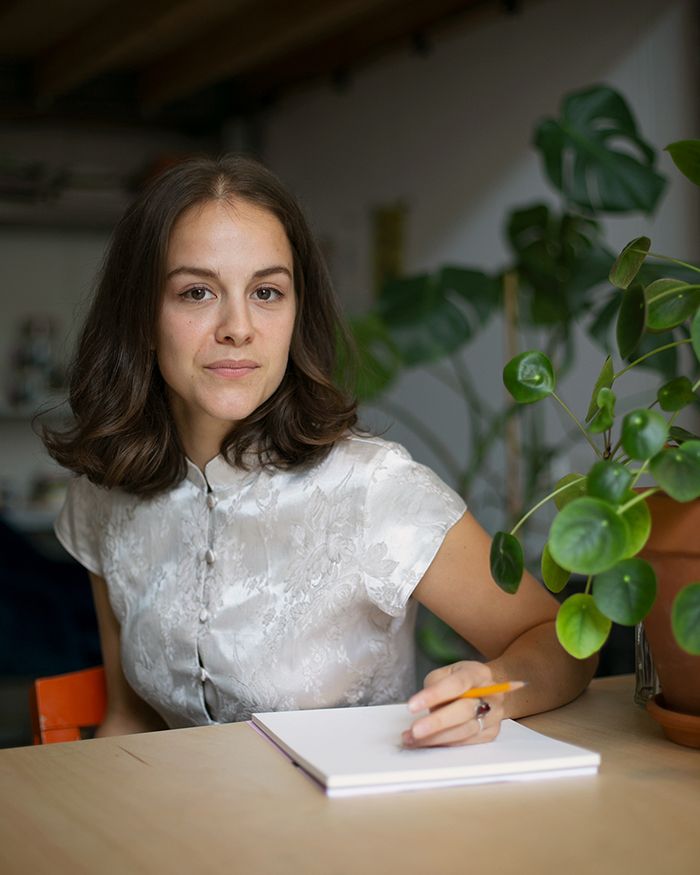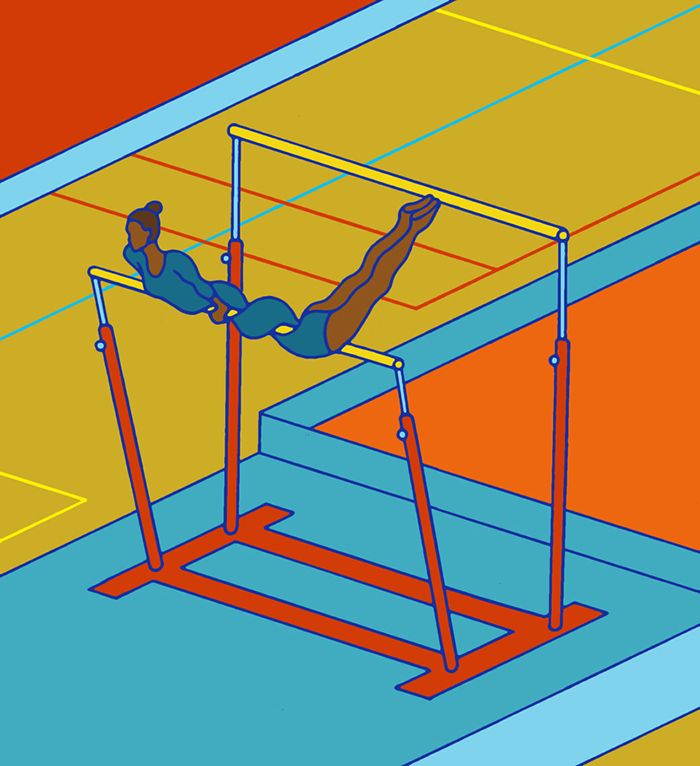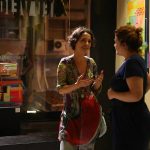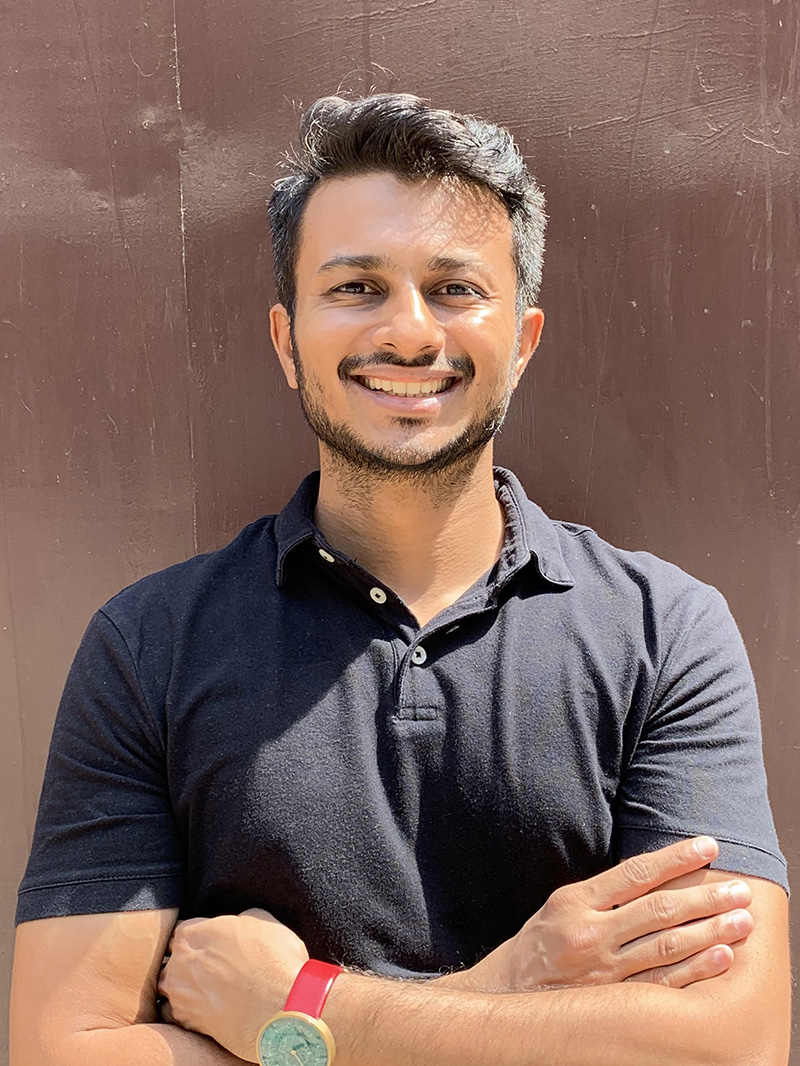Contemporary artist Jasmijn De Nood talks about her journey in an interview with Anjali Singh for the Asian Curator.
Artist interview

Please tell us a little about yourself. How do you describe yourself in the context of challenging people’s perspectives via your work?
I was born and raised in Amsterdam, the Netherlands. I’ve been drawing for as long as I can remember. As a kid I was already creating little ‘scenes’ in my drawings, trying to depict stereotypes, their interactions and surroundings. I have many drawings of disproportionate figures gesturing at each other; while they’re sitting in a space that lacks any perspective. I distinctly remember being annoyed at my drawing skills. Because they did not allow me to draw the interiors and people adequately enough to make the scenes come across. How people interact with each other and their surroundings is still one of my main interests. I like to look at the various ways a person presents themselves in different situations. And how all of those ‘portrayals’ make up that person’s character.
I think my style of drawing makes my illustrations easy to read. My drawings are not realistic but they are stylised enough to make what is depicted in the scene comprehensible. This allows me to show things that are at odds with reality, but recognisable nonetheless. This way of working enables me to comment on contemporary themes.
What brought you to the world of contemporary visual art and how did you start?
During my adolescence I drew as realistically as I could and quickly became better. I had always been playing with the idea of going to art academy but I did not considerate it seriously until my final years of high school. I had two very enthusiastic art teachers who encouraged us to draw everything we saw, in as many different ways as we could think of. Because I was drawing all day every day from that moment, I quickly became bored with my realistic style of drawing. Trying new styles, subjects and compositions made me see the possibilities of telling a story through images and this felt like the right way of expressing myself.

Creative inspiration & creative blocks
What does creative inspiration mean for/to you?
Creative inspiration means that already existing concepts in my head link together in such a way that it seems like new possibilities arise, as if they start to click. Inspiration can take the form of a surprising composition in an illustration or a photograph, unusual lighting or colour combinations in a movie, a conversation I hear in public transport, a building or the whole ambiance of a particular night out.
Lately I am interested in architecture and urban planning. My father has worked as a building engineer in different architectural firms and is always pointing out beautiful details in buildings. When I was a kid this bored me very much, but I think it has influenced me more than I thought. Lately I’ve been inspired by the buildings of Ricardo Bofill and I always find inspiration in M.C. Escher’s work.
How do you deal with the conceptual difficulty and uncertainty of creating new work?
To come up with a good idea out of nothing, for commissions or in general, is very hard. Over the years I found that it helps to actively keep myself inspired. By regularly feeding myself information in the form of stories, articles, images, movies, etcetera, I’m already a little bit inspired most of the time. It makes it easier for new possibilities to ‘click’ as I mentioned before. Commissions are always at least partially open for interpretation. Although I am of course trying to implement the vision of the commissioner, I find it easier to have a starting point within myself.
Tell us about your art studio, what kind of place is it? A day in the life of a visual artist Could you describe your usual work-day?
My studio is based in ‘het Volkshotel’ in Amsterdam. This building used to be the headoffice of one of the Netherlands’ biggest newspapers but now it hosts a hotel, a bar, a restaurant, a club, flexible workspaces and artists’ studio’s. I share a studio there with 4 other creatives. It works very well for me to be able to discuss ideas with them and to be inspired by their work at the same time.

Career as an artist
Describe a professional risk that you took. What helped you take it?
It is not one risk in particular but: I’m saying no to things more often. I prefer to do commissions if they are up my alley, because I think it often becomes a better illustration if I can put some of my own interests in. The content or the subject does not need to match my own interests of course, but I do need to have the feeling that I can give it my own spin, so to say.
It is not one risk in particular but: I’m saying no to things more often. I prefer to do commissions if they are up my alley, because I think it often becomes a better illustration if I can put some of my own interests in. The content or the subject does not need to match my own interests of course, but I do need to have the feeling that I can give it my own spin, so to say.
On the source of inspiration
What are you looking for in other visual artists work?
When I’m impressed by a work it is usually because an element about it surprised me. It is not really anything I’m looking for in particular. Generally I’m looking for a surprising concept, executed in a way that brings the concept out best. I think Erwin Wurm is an absolute master in this. He often uses very normal, daily subjects and transforms their form or function in such a way that it makes me doubt everything I presumed to be normal or daily. Another great example for me is illustrator Brecht Evens. I have two of his graphic novels at home: ‘The Wrong Place’ and ‘The City of Belgium’. The vibrant use of colour, timing, frames and dialogues in his graphic novels all contribute to exactly the right ambiance for his stories: an amazing, bombastic trip with a bit of an uncomfortable edge.
When I’m impressed by a work it is usually because an element about it surprised me, so it is not really anything I’m looking for in particular. Generally I’m looking for a surprising concept, executed in a way that brings the concept out best. I think Erwin Wurm is an absolute master in this. He often uses very normal, daily subjects and transforms their form or function in such a way that it makes me doubt everything I presumed to be normal or daily. Another great example for me is illustrator Brecht Evens. I have two of his graphic novels at home: ‘The Wrong Place’ and ‘The City of Belgium’. The vibrant use of colour, timing, frames and dialogues in his graphic novels all contribute to exactly the right ambiance for his stories: an amazing, bombastic trip with a bit of an uncomfortable edge.

Themes you are currently working on?
Last year I made a graphic novel, together with a writer/researcher and 3 other illustrators. The graphic novel is called No Seat At The Table and it is a fictional story about gentrification and urban displacement in different cities in Turkey and The Netherlands. As I said before, I am currently very interested in architecture and urban planning. I think the way we organize our public spaces and cities is of crucial importance to a society. It influences the amount of opportunities available to residents and determines the diversity of the city and the way different groups approach each other.
Any upcoming show or events we can look forward to?
The book launch and exhibition of the graphic novel No Seat At The Table are unfortunately postponed due to Covid-19. The exact dates are yet to be confirmed but both will hopefully take place in late 2021 in Amsterdam, the Netherlands.
Artist contact information
For enquiries contact – info [at] jasmijndenood [dot] com
Before you go – you might like to browse our Artist Interviews. Interviews of artists and outliers on how to be an artist. Contemporary artists on the source of their creative inspiration.












Add Comment